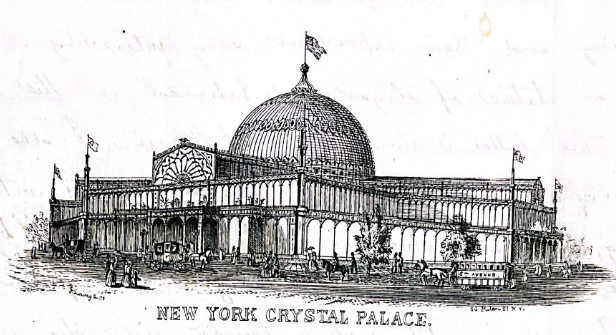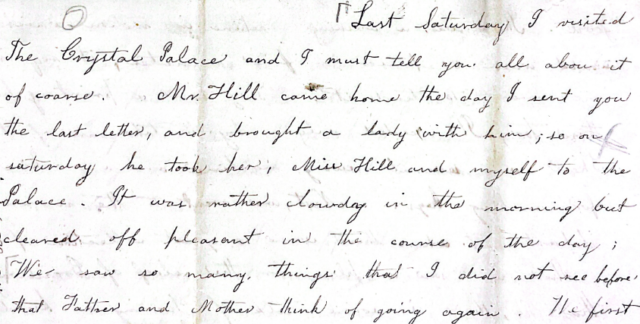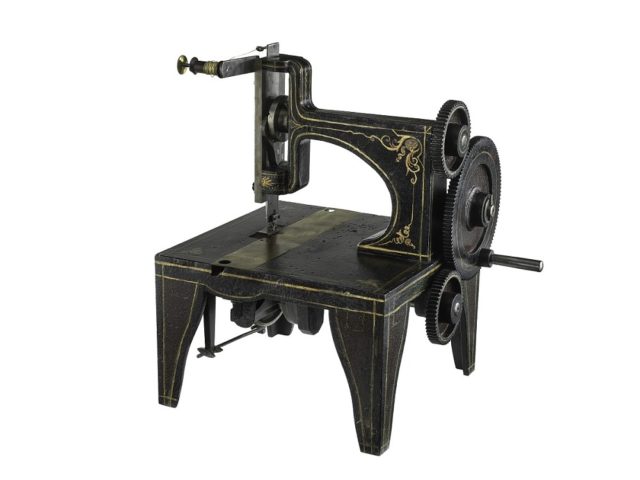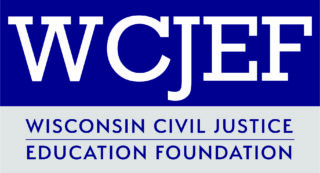“I visited the Crystal Palace and must tell you all about it.”
Lavinia Goodell, November 23, 1853
In the summer of 1853, the Crystal Palace exhibition building opened on 42nd Street in New York City, between Fifth and Sixth Avenues, in what is now Bryant Park. Inspired by London’s 1851 Crystal Palace, the New York edifice had the shape of a Greek cross and featured a dome that was 148 feet high and 100 feet in diameter.

Officially called the Exhibition of the Industry of All Nations, the Crystal Palace was New York’s first world’s fair. The poet Walt Whitman, a frequent visitor, wrote that it was “certainly unsurpassed anywhere for beauty.” Fourteen-year-old Lavinia Goodell visited the exhibition in November of 1853 and shared many details of what she saw in a letter to her sister, Maria Frost, written on a sheet of paper she bought at the Palace.

Lavinia was suitably impressed with the variety of items on display, saying, “We saw so many things that I did not see before that Father and Mother think of going again.” Lavinia and her family began their tour in the hall of statutes where they saw, “love before the fall, then one of love immediately after, then of Adam and Eve receiving the curse, and lastly one of them after they were driven from the garden. They were all very striking and their expressions very interesting.”
The machine rooms featured the most modern inventions:
There were five machines going at the time. I saw a cotton gin going. It cleaned cotton very good. There was a washing machine in motion, which would wash 50 pieces in five minutes. It required one man to tend it. They have a printing press there, too. It needed only a boy to take care of it. There were several sewing machines and a machine for making logs.

The mineral department featured “a great selection of stones.”
Then we saw a plan for the relief of Broadway, that is, there is some talk of having a kind of bridge or second story over the street so that it need not be so crowded. Perhaps no such plan will ever be affected but you know it is easy to talk about it.
Furniture, textiles, and jewelry abounded:
Then we saw a bedstead of carved rosewood with a spread of silk mosaic work. We also saw a great deal of silk, satin, velvet, embroidery, etc…. There was a great deal of silver and gold dishes, tea sets, dinner sets. I saw a tree covered with fruit and a monkey on it, all made of chocolate. Then we went into the picture gallery but by that time I was so tired that I did not take much notice of what I saw there…. What interested me most was a picture of the Angel of Death bearing off a young girl. I wish I could begin to tell you any thing about it but I cannot. We got home about dusk.
Subsequent family letters indicate that the Goodells did indeed make at least one return visit. The Crystal Palace was destroyed by fire on October 5, 1858 during the American Institute Fair being held there. The fire began in a lumber room. The dome fell within fifteen minutes and in less than half an hour the entire structure had burned to the ground.
Sources consulted: Lavinia Goodell’s letter to Maria Frost (November 23, 1853); Sam Roberts, “New York’s Crystal Palace: A Fleeting Monument to Conspicuous Consumption,” (New York Times April 27, 2017).







